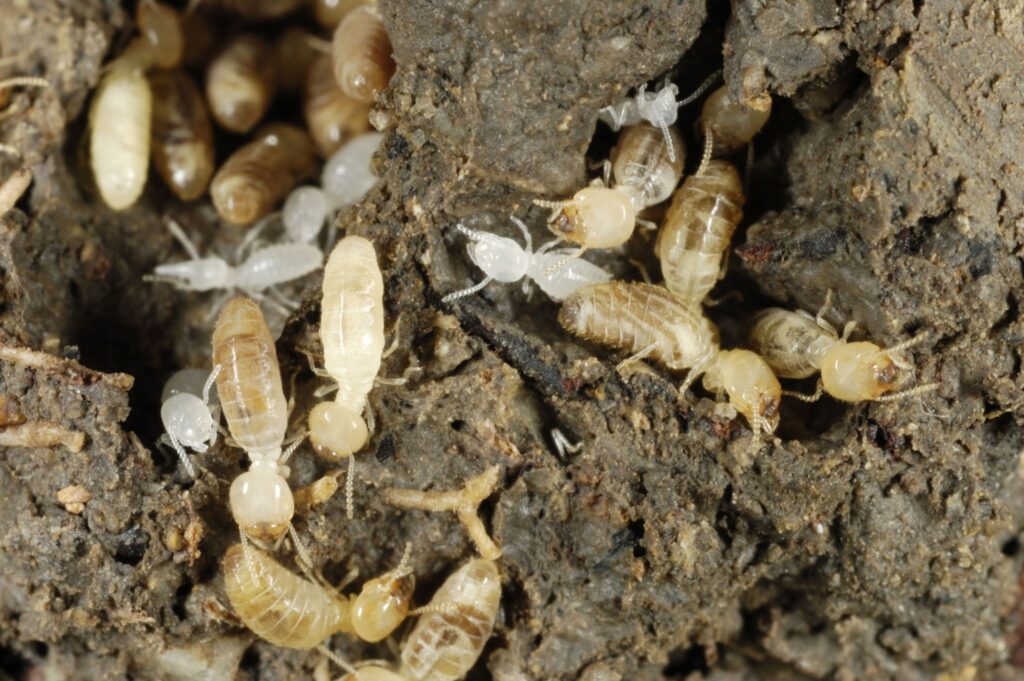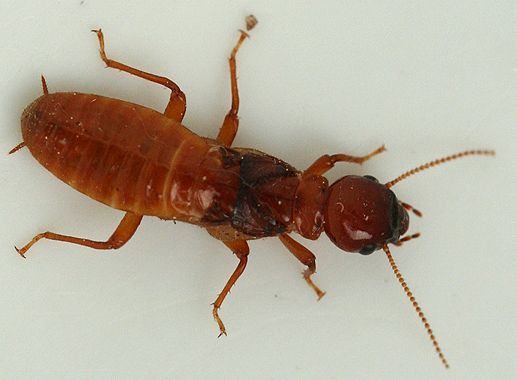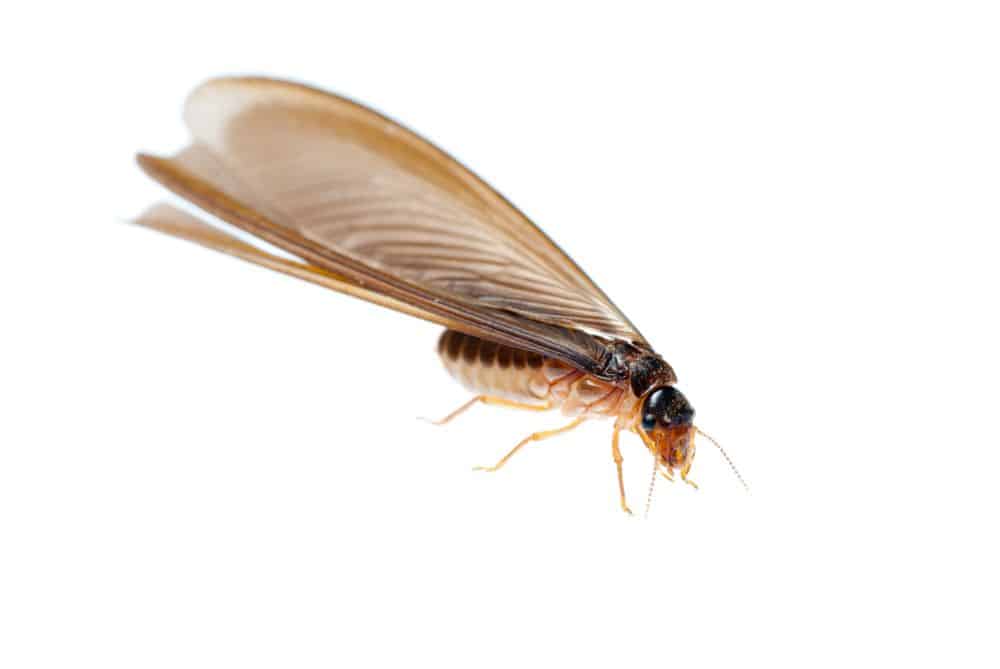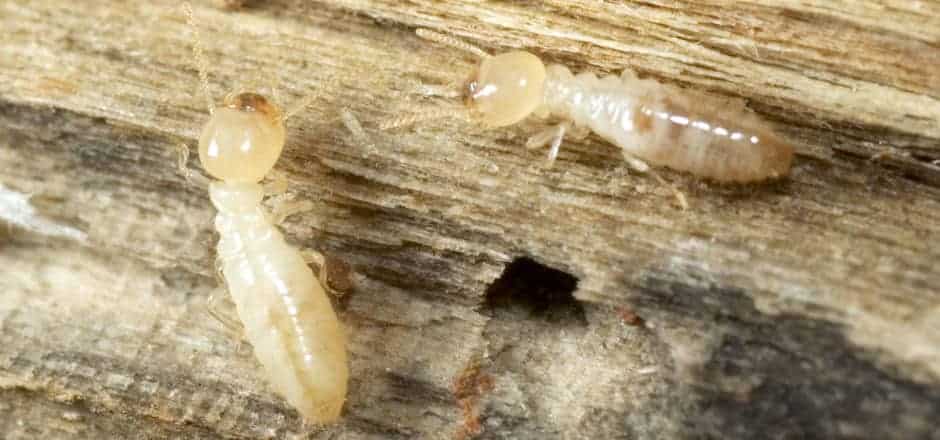Termites aren’t only nuisances to our homes and buildings, but they can also destroy our gardens! You may have noticed termites in garden settings, particularly in soil. While it easy to panic, you should know that termites actually naturally occur in soil.
When you find termites in your garden, it means that they found a source of food, as they feed on cellulose that exists in wood and plant roots. They will stay hidden as they first spread, particularly in outdoor settings, which is why it’s difficult to find termites during the larval stage.
Once they have grown, termites will then grow attracted to light sources, making them more active and noticeable in garden settings. This is why if you plan to build wooden structures near gardens, then you have to opt for termite-resistant wood.
But what if you’re currently experiencing a termite infestation in your garden? Read on as I show you how to get rid of termites in garden soil now!

Types of Termites You Encounter
There are different kinds of termites you may come across, such as the:
1. Dampwood Termites

These are found in moist woods, finding them in woods close to the soil rather than in your home. They have a brown to creamy white color with a long, narrow, and oval shape. They are less than an inch long, and you can find them in the Pacific Coast, Southern Florida, and nearby states.
2. Drywood Termites

These types of termites can cause damage at a slower pace but the bigger end result. They are usually light brown or creamy white in color, having the long, narrow, and oval shape dampwood termites have as well. However, they are a bit bigger, being up to an inch long, found in Texas, California, and South Carolina.
3. Subterranean Termites

These termites can destroy woos the quickest, creating large nests and live in the soil, connecting with trees and timbers near homes. You can find the termites around the US, being black or brown to white creamy in color, with the long, narrow, and oval shape. They are one of the smallest, being 1/8 of an inch!
How can you tell if you have termites? This depends on the type of termites you have.
You may have noticed termites flying near light sources, or wings caught in webs, windowsills, or the floor. Sometimes, termites would leave droppings in concentrated regions since they live and eat in tight areas.
For dampwood termites, they are found in wet regions like wet woods, swamps, marshes, and the like, using soil and soil caves to protect themselves. As for subterranean termites, you can find signs of them based on the dirt and what they eat, as they would usually leave trails of dirt.
How to Get Rid of Termites in Garden Soil
If you have termites in your garden soil, you aren’t alone! This is actually a common issue many gardeners face.
Not to worry, as it’s fairly easy to get rid of these termites. Here are a few tips and methods you can follow:
1. Keep the Moisture Under Control
Damp spaces are popular among termites, which is why you should minimize the damp areas and wood in your garden. Damp locations are preferred climates for these pests, and wherever moisture would collect.
Create a liquid termite barrier, which can be used on wooden structures, tree stumps, and woodpiles. They will also be sprayed, killing termites if they get on it.
Also, take note that termites can gather in home gutters, with down-spout extenders forcing them to your garden. Keep an eye out for termites on pooling water in your garden and avoid water from pooling and collecting, which adds moisture.
2. Use Nematodes
Nematodes, which are naturally occurring roundworms, can kill pesky termites. This is all thanks to their gut bacterium, making them an effective and natural insecticide. The release of gut bacteria will poison termite blood, slowly killing them.
You can find nematodes in various habitats, being 100% natural. They won’t cause harm to any human, pet, or plant. When you introduce nematodes to your garden, you’ll have long-term effects, with the process happening as quickly as 24-48 hours upon release.
Besides termites, nematodes breed and multiply to keep other common household pets at bay for weeks at a time.
3. Try Boric Acid
Boric acid is also available in the powder mixture, which is one of the best ways to terminate insects like termites. Boric acid will complicate termites’ digestive and metabolic systems. With prolonged exposure, the termite will die, taking about 3-7 days on average.
All you need to do is to mix boric acid powder, sugar, and water. This will attract the termites and once they start moving back the acid mixture to the colony, they’ll die off completely. Just make sure that you use goggles and a dust mask as you prepare your boric acid mixture. Another method is to spray boric acid powder in areas where you suspect there is an infestation.
If you don’t want to use insecticides, not to worry, as boric acid is a less toxic insecticide compared to other types. Continue whatever method you use for 3-5 days and monitor the results.
Wrapping It Up
Termites are a common problem in the garden, much to many gardeners’ dismay, with the chance of destroying everything you worked for. But not to worry, as there are ways that you can get rid of them on your own, along with preventing any infestation from happening again. If push comes to shove though, be sure to call pest control, especially if it has spread out to your home’s structure!
Hopefully, this guide on how to get rid of termites in garden soil helped you out. Now that you know what to do, try these tips now and remedy the termite problem in your garden. Good luck!
Thank u so very much i will try the Boric Acid